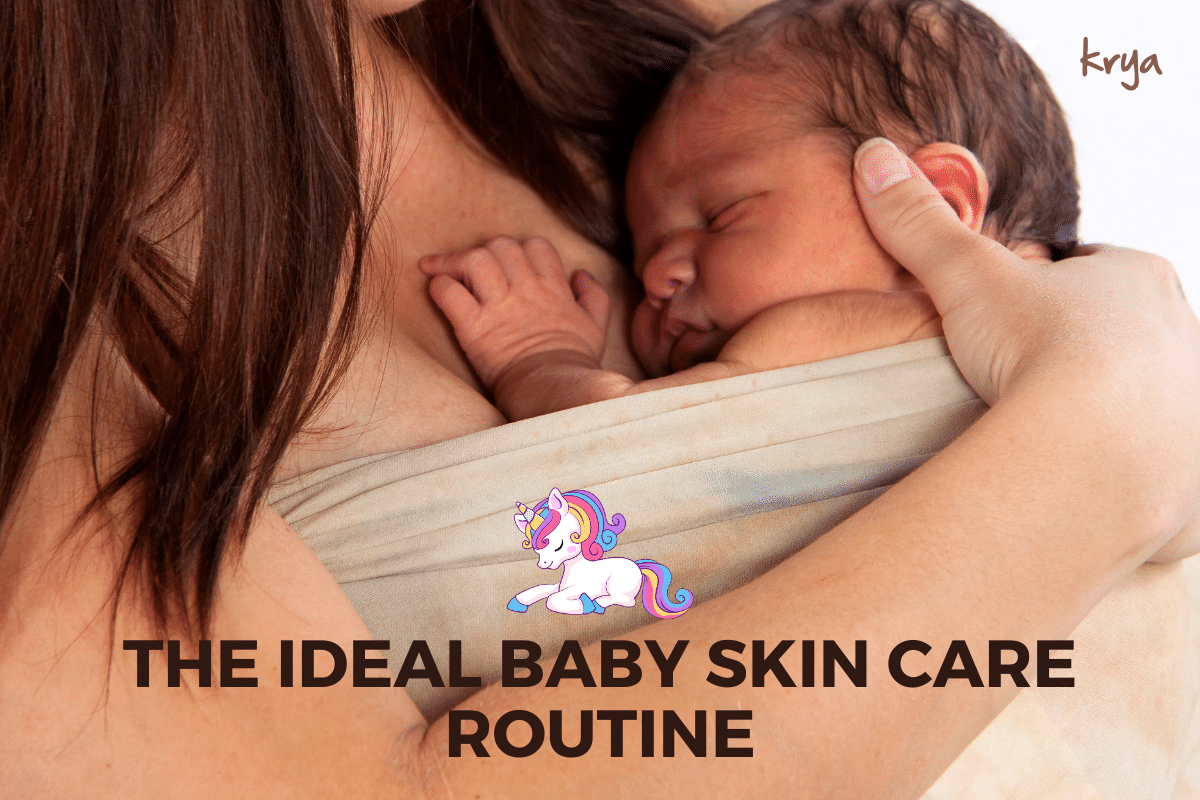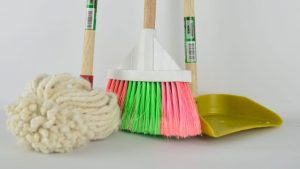This post was last updated on August 12, 2021 by Preethi Sukumaran
I can’t seem to get the phrase “Let it bleed “out of my head for the past few days. I was reading about the 1969 Rolling Stones album called Let it bleed” and shortly afterwards read the Ian Rankin novel of the same name, inspired by the album. And then, all through July my partner Preethi has been reading, researching, blogging and advocating the cause of re-usable cloth napkins, as opposed to disposable sanitary napkins.
I share an office with Preethi, and obviously I cannot help being surrounded by the animated discussion around periods, menstruation and how women can green their periods by switching to cloth napkins. It was an important cause for us at Krya and I was happy to observe from the sidelines and carry on with my own work. And then suddenly, out of the blue, Preethi asked me to write an article, the man’s perspective on menstruation and re-usable napkins. I should have seen it coming though, given my special background.
Where it all began : a class project on the sanitary napkin industry
It all started in college, at IIM-Bangalore in 2000. I obviously knew nothing about menstruation, beyond the two periods in the biology class that dealt with the female reproductive system. What little I learnt in those biology classes, could have been written on the side of a tampon. Of devices to manage menstrual flow, like sanitary napkins, I knew nothing at all.
In a marketing course we were a group of five, four lads and a girl. Our project was to take a particular product category, and analyze how disruptive marketing strategies turned the category on its head, or something to that effect. We were just a few days from the deadline and had no clue about the project and not much inclination either.
Then the sole girl in our group decided to take matters into her own hands and started work on writing a project report on the sanitary napkin category in India. Obviously she had some knowledge of the industry as a consumer and to her credit; it had a lot of potential for the marketing academic to work with. Needless to say she toiled alone for a few days with the other four lads clapping and encouraging her from the sidelines.
Then on the very last evening before the big project presentation, she gave up the lone crusade. And decided it was time to take help. I was the first group member that she could locate and with a massive number of grade points on the line, I decided to do my share of the project work. This close to the deadline I could not start work on a new category and so I decided to man up and learn all about sanitary napkins. Soon I found myself sitting in the night canteen , quizzing a couple of girls about their periods, their choice of sanitary protection and a quick download on belted and beltless napkins, ultra-thin and cottony napkins. Needless to say, the next morning, in front of a class of sixty colleagues and an embarrassed, middle-aged marketing professor, I gave a profound lecture on the Indian sanitary napkin industry.
And it didn’t stop there: I went on to join a sanitary napkin company
That little marketing project was just the beginning. A year later, by an extremely convoluted, twisted turn of events, I found myself working in a company that also happened to be India’s largest manufacturer of sanitary napkins. Then I drew the short straw and got assigned to the marketing team responsible for sanitary napkins. On my first day as the product manager of the ultra-thin napkin brand, I remembered my marketing project in college and like Wooster, emitted a hollow, mirthless, laugh.
The company was bleeding market share and miracles were expected of my ultra-thin brand. As a first step, I remember writing a detailed newsletter to the entire sales force, on why gel-based ultra-thin napkins were the future, how they offered superior, discreet protection to women even on heavy flow days. I just couldn’t believe what I was writing at that time and restore my sanity, I heavily referenced a favorite Jimi Hendrix song and threw in a Superman comics reference. I even branded all my monthly newsletters as Purple Haze.
The surreal world of sanitary product sales
For the next couple of years I found myself daily in an increasingly surreal set of situations. I have held P&L responsibility for belted napkins, ultra-thin napkins, beltess cottony napkins, tampons (with and without digital applicator) and even liners.
For a brief period (the fifth pun so far, for those keeping count) I was the only man in a five member marketing team and battled several “what would you know” type of arguments. I have written a detailed research report on why belted napkins were crucial to the mother-ship and had a future. For a few weeks, with some key teammates on leave, I had responsibility for the brands customer care cell. I have no doubt that the hundreds of consumers writing to the brand with their period problems pictured an elderly gynecologist at the other end.
Someone got the idea that women executives in MNC banks were well suited to receive marketing messages about tampons. So one day, I found myself in a bank in Delhi, distributing free samples of tampons to the unsuspecting women at lunchtime. In return for the samples, we requested product feedback. During a call back a month later, one lady said that she had no use for the tampons as she had reached menopause.
Connecting the dots at Krya
However more than a decade later, as I type this article at my office in Krya , one experience stands out and has a whole lot of relevance to our discussion on re-usable cloth napkins. In my first job, I had the primary responsibility to execute a massive pan-India program to educate school girls on menstrual hygiene and of course distribute a free sample of a wood-pulp based napkin at the end of the lecture. This was conducted with the blessing of the local health authorities and focused on government girls schools in the smaller districts.
The entire program was a well oiled machine and all that was required of me was to travel once every other month for a field visit to check out the execution. In a girls school in Nasik district, I was waiting outside the class full girls who were receiving information about how cloth rags were unhygienic and why napkins were crucial to women’s health. For obvious reasons I never entered the hall during these lectures, but on this occasion I was asked by a teacher to respond to a very specific question by one of the girls. She simply asked me that that it was all very well to receive the free sample, but come the next month she had no hope that her parents could afford to buy her a pack of napkins. So what’s a girl to do? I gave her a brief answer on price versus value and the importance of health.
Looking back I have been responsible in a small way, for distributing millions of wood-pulp based disposable napkins along with a subtle message that cloth was an inferior, unhygienic solution.
But cloth napkins are not inferior
I am glad today that at Krya I have a fantastic opportunity to set right some wrongs of days past. For one, there is no question that disposable napkins of any stripe are an environmental disaster. They present a huge landfill and public health problem. Period.
Secondly, I am reliably told that re-usable cloth pads are way better for the user, no weird dioxins or fragrances. In my career as a product manager I depended completely on Preethi’ s wisdom for consumer behavior and was rather successful too. Once again with her direct, profound experiences on using re-usable cloth napkins, I can recommend that they good for the environment and good for you too.
To this I will add the man’s perspective. Switching to re-usable cloth pads from disposables needs some serious support. Sometimes there can be weird smells in the bathroom as they get washed. A few stray drops of blood on floor. I am acutely aware that a few disapproving comments from the partner can add immensely to the existing mental barrier around re-usable cloth pads.
So here are my 5 reasons why men should encourage their wives/partners to switch to re-usable cloth napkins.
1. No more emergency, late night runs to the pharmacy to bring back a black plastic bag.
2. Do it for the environment, disposables are an environmental headache.
3. Do it for the woman in your life. My reliable source tells me that re-usable cloth pads are more comfortable, work really well and are safer too.
4. There is no weirdness around menstrual blood, it is natural and at the right times, a sign of good health. In our home, soiled cloth napkins are kept in a separate bucket and rinsed first to remove the blood. Then after a wash with Krya detergent they are good to go. They are washed in the same machine, laundered along with all of our regular laundry and they are absolutely clean and hygienic.
5. Re-usable cloth pads are quite sturdy and long lasting, so over a few years they will prove to be more economical than disposables.
So to all the husbands & boyfriends, if you have some ick-iniess around the switch from disposables to re-usable cloths pads – Be a Man, let her bleed.





A refreshing read!
Thank you Preethi!